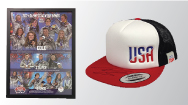Alpine Training Volumes at Youth and Junior LevelMonday, Aug. 5, 2013 |
||||||||||||||||||||||||||||||||||
|
Last winter the USSA surveyed its clubs and coaches to determine actual on-snow training levels of our alpine athletes at the youth and junior levels compared to the recommendations set forth by our National Training Systems. This survey indicated the following: · On average, U10s ski close to the number of target days of skiing per year (40-60 days). But a significant number ski 31-40 days (or in some cases less). And a minority ski more (60-100 days). · At the U12 level, athletes are slipping behind the recommended 60-80 days, still skiing predominantly 40-60 days per year. A smaller population achieves the recommended number of on-snow days. · At the U14 level, the trend of falling behind becomes even more pronounced, with the large majority of our athletes falling significantly short of the recommended 90-110 days on-snow. · The trend continues at the U18 and U20 levels, where many of the athletes in our system fall short of the recommended on-snow volumes. · U10 racers predominantly compete as much as recommended (up to 10 starts per year). · Many U12 athletes compete less than the recommended 10-15 starts per year. · U14 racers become more balanced, but still a significant number of athletes fall short of the recommended 12-24 starts. · The trend continues at the U16 and U18 levels with a growing number of athletes falling short of the recommended 20-40 and up to 55 starts per year. · This deficiency in on-snow days also creates an imbalance in the ratios of training – freeskiing, structured freeskiing, competition training, specific competition rehearsal and competition · U10 athletes are generally over-emphasizing competition (13% vs the recommended 5% of on-snow time) and competition rehearsal (10% vs the recommended 5%). And they are generally freeskiing (29% vs the recommended 35%) and structured freeskiing (25% vs the recommended 35%). Competition training at this level is largely in line with the recommendation. · U12 athletes are generally over-emphasizing competition training, competition rehearsal and competition (51% vs the recommended 40%) and under-emphasizing freeskiing and structured freeskiing. · Training at the U14 level comes closer to recommendation, where athletes are using 55% of their on-snow time for competition training, competition rehearsal and competition, vs the recommended 50%. But due to lower than recommended volumes, freeskiing and structured freeskiing are being sacrificed. · At the U16 level, competition training and freeskiing come very close to recommended levels (58% competition and competition training/rehearsal vs the 60% recommended), but the freeskiing training that is done shows a higher ratio of unstructured freeskiing vs structured freeskiing. At this level, structured and unstructured freeskiing are split 50/50, with the recommendation being 37.5/62.5. · U18s are very close to recommended ranges, but could do slightly less freeskiing and more competing. There are many factors that can lead to imbalances and insufficiencies in these volumes and ratios, including availability of training space, length of on-snow season, motivation of coaches, preference of athletes, and pressures from parents, who report that the number of competitions days at every level is "just right" according to survey results. It has been well-documented that high volumes of specific and purposeful practice develops elite performers. USSA Clubs and coaches should evaluate their own practices in line with the recommendations of the National Training Systems when evaluating and designing their athlete development and high performance systems, and create their plans accordingly to give their athletes the highest probability of reaching exceptional levels of achievement. Clubs and coaches should also educate parents and athletes about the recommendations of the National Training System so there is greater understanding and buy-in behind the club's development performance approach. Luke Bodensteiner - EVP, Athletics |
Recent Blogs
|

